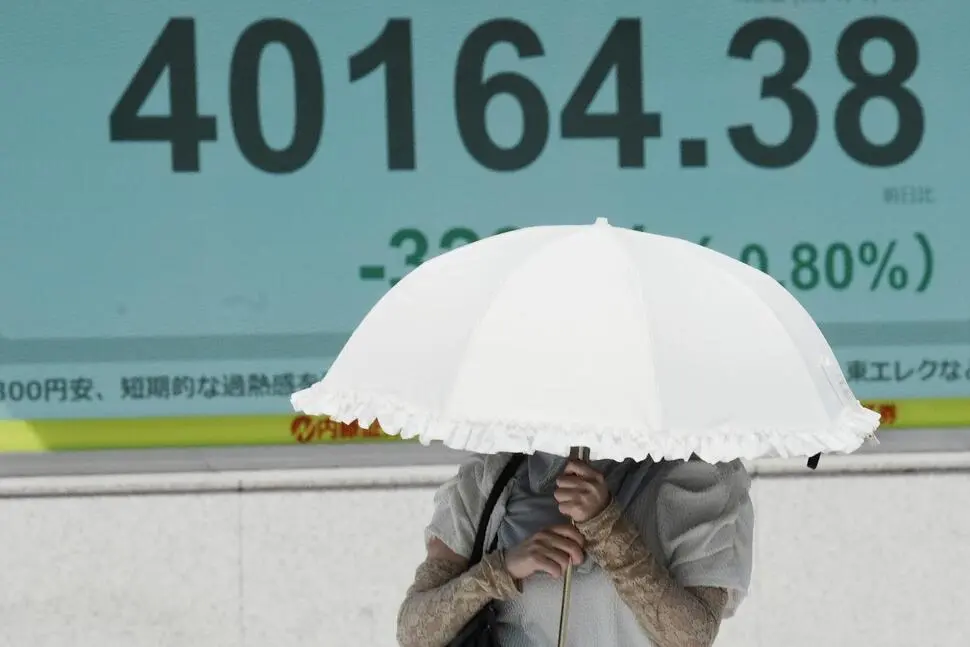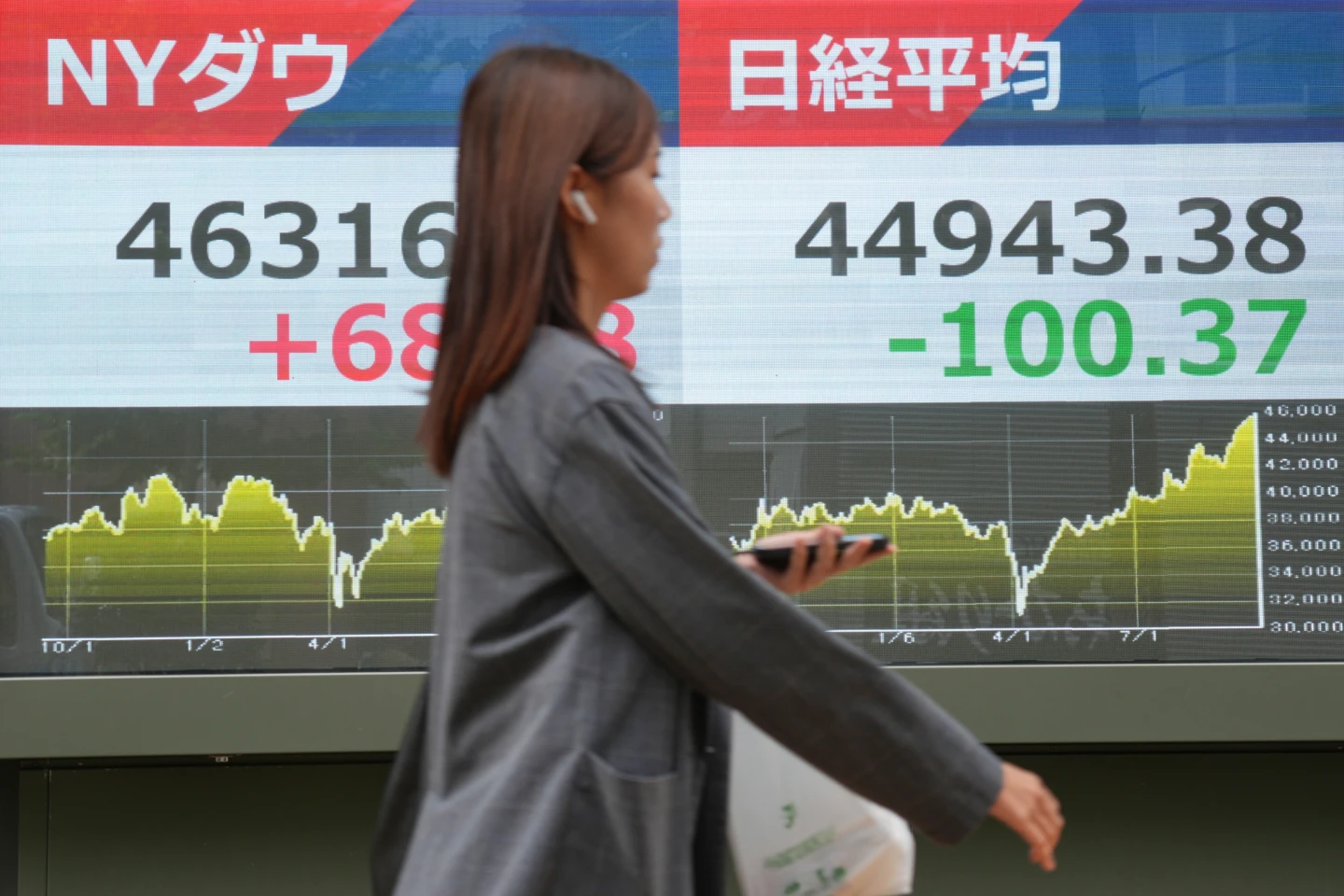Markets in Flux: Global Stocks Waver After Wall Street's Record-Breaking Surge
Following a historic rally in U.S. markets that pushed major indexes to new all-time highs, global stock exchanges showed mixed responses. Investors worldwide remain cautiously optimistic, weighing economic momentum against inflation and interest rate uncertainties.
In the wake of a historic Wall Street rally that sent U. S. stocks soaring to record highs, global markets responded with a blend of enthusiasm and hesitation.
As major indexes like the S&P 500 and Nasdaq Composite shattered previous ceilings, international exchanges — from Tokyo to Frankfurt — wavered, reflecting both optimism and deepening concerns about global economic conditions. A U. S.
Rally with Global ReverberationsThe U. S. equity surge was powered by a potent mix of stronger-than-expected corporate earnings, a resilient labor market, and renewed investor confidence in the Federal Reserve's ability to navigate inflation without triggering a deep recession.
Tech stocks led the charge, with megacap firms such as Apple, Microsoft, and Nvidia posting double-digit gains over the past quarter. By the close of the week, the S&P 500 had notched its highest closing value in history, while the Nasdaq shattered its previous peak for the first time since late 2021. The Dow Jones Industrial Average followed suit, driven by gains in financials and consumer cyclicals.
Europe Treads CarefullyIn Europe, investor sentiment was more cautious. The pan-European STOXX 600 dipped slightly, with weakness in energy and utilities offsetting modest gains in industrials and tech. Germany’s DAX and France’s CAC 40 both moved narrowly, as analysts remained focused on the European Central Bank’s (ECB) future policy moves.
With inflation slowing but still above the ECB’s 2% target, markets are unsure whether further rate cuts will materialize before year-end. ECB President Christine Lagarde struck a balanced tone in her latest remarks, emphasizing the need to remain vigilant while acknowledging recent progress on inflation. Asia’s Mixed ResponseAsian markets mirrored the divergence.
Japan’s Nikkei 225 rose modestly, continuing its steady ascent amid robust corporate earnings and a weaker yen that benefits exporters. However, in China, markets slipped. The Shanghai Composite fell 0.
7% amid ongoing worries about the country’s property sector and muted domestic demand. China’s government has taken steps to stimulate growth, including rate cuts and infrastructure spending, but investor confidence remains tepid. Meanwhile, Hong Kong’s Hang Seng Index also edged lower, pulled down by tech and real estate shares.
Emerging Markets Show CautionIn emerging markets, the picture remained cloudy. Brazil’s Bovespa and India’s Sensex showed slight gains, driven by local developments and investor optimism in domestic reform agendas. However, concerns about capital outflows, currency volatility, and the trajectory of U.
S. interest rates kept gains in check. Many emerging economies continue to battle inflation, supply chain disruptions, and geopolitical instability, all of which have left investors wary despite the U.
S. rally. Fed’s Delicate Balancing ActOne of the key factors driving global uncertainty is the Federal Reserve’s next move.
After pausing rate hikes, the Fed is in a “wait and see” mode. Recent data show that inflation is cooling but remains sticky in certain sectors like housing and services. Chair Jerome Powell’s recent remarks struck a nuanced tone: “We’ve made significant progress, but we’re not done yet.
” Investors are betting that the Fed may cut rates as early as Q4, but the central bank remains noncommittal. Any signs of resurgent inflation or labor market overheating could delay those cuts and reignite volatility. Corporate Earnings Drive the MoodThis earnings season has defied the bears.
Across the S&P 500, nearly 80% of companies reporting so far have beaten analyst expectations. Tech, financials, and consumer discretionary stocks have all posted strong results, painting a picture of a surprisingly resilient economy. “Companies have demonstrated remarkable adaptability,” said Linda Zhao, equity strategist at Ridgeview Global.
“They’ve managed costs well, found new revenue streams, and capitalized on digital transformation trends. ”Global firms have echoed similar themes. European industrial giants like Siemens and Volvo reported stronger-than-expected results, while Japanese conglomerates showed profit rebounds after years of sluggish growth.
Investor Sentiment and Market PsychologyInvestor sentiment is showing signs of cautious optimism, but volatility remains a concern. The CBOE Volatility Index (VIX), often called the market’s ‘fear gauge,’ has edged lower in recent weeks, signaling a more relaxed market mood. Still, traders remain on edge, closely watching central bank signals, geopolitical developments, and macroeconomic data.
Portfolio diversification and risk management have become more prominent among institutional investors. With markets at record highs, some funds are locking in profits and rebalancing toward safer assets, including bonds and gold. Currency and Commodity MovesThe currency markets also reflected mixed investor views.
The U. S. dollar weakened slightly against a basket of global currencies, with the euro and yen gaining ground amid shifting interest rate expectations.
Meanwhile, oil prices declined modestly, despite geopolitical tensions in the Middle East, as concerns about slowing global demand weighed on prices. Gold held steady above $2,000 an ounce, supported by investor hedging and expectations of a more dovish Fed stance later in the year. What Lies Ahead?As markets digest the new highs, the question looming is: can the rally sustain? Analysts are split.
Some argue that the market is pricing in a soft landing and Fed rate cuts — perhaps too optimistically. Others believe that the recent gains are justified by economic fundamentals and corporate performance. “It’s a tug-of-war between macro risk and micro resilience,” said Omar Patel, a strategist at Sequoia Asset Partners.
“Markets may pull back in the short term, but long-term growth themes remain intact. ”Looking ahead, upcoming economic reports — including inflation, employment, and GDP figures — will be critical. Investors are also keeping a close eye on geopolitical tensions, particularly U.
S. -China relations and the ongoing conflict in Ukraine. Conclusion: A Global Balancing ActWall Street’s record-setting performance has undeniably injected energy into global markets.
But while the U. S. may be basking in the glow of economic resilience and earnings strength, the rest of the world is navigating a far more complex set of variables.
From cautious central banks to fragile recoveries in Asia and emerging markets, the global financial ecosystem remains in a state of balance — not yet tipping toward full optimism, but no longer gripped by fear. In the weeks to come, markets will continue to dance between confidence and caution, driven by data, decisions, and the unpredictable nature of an interconnected economy. Whether this is the beginning of a sustained bull market or the prelude to another correction, one thing is clear: investors across the globe are watching closely, with one eye on Wall Street and the other on everything else.
22nd july 2025



